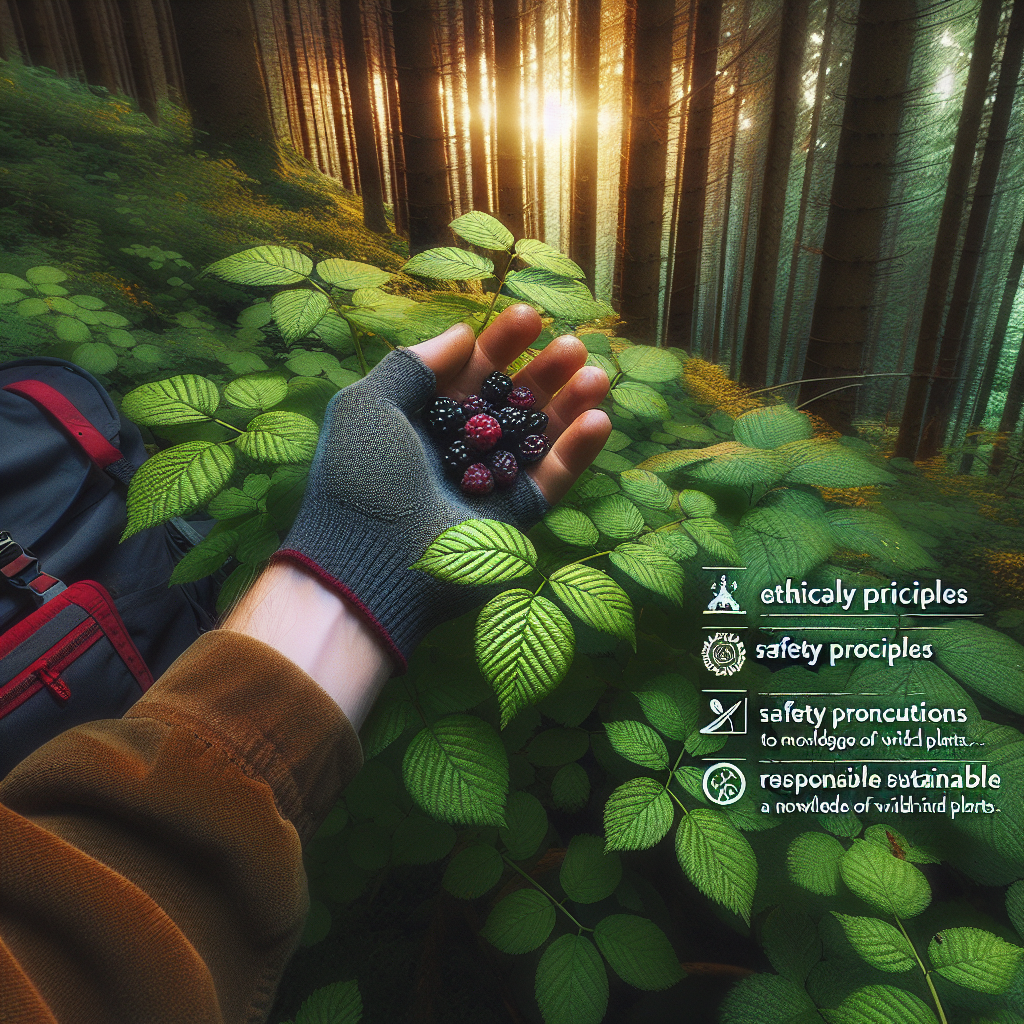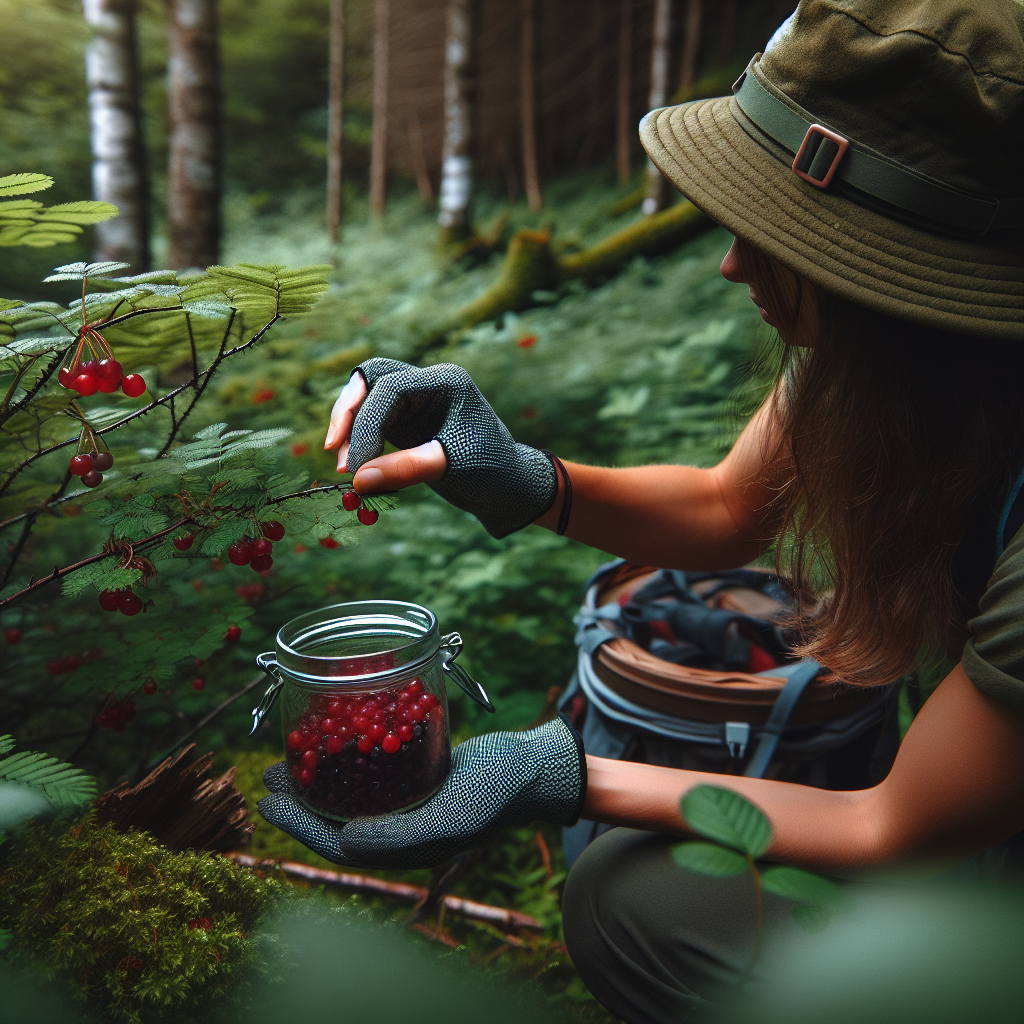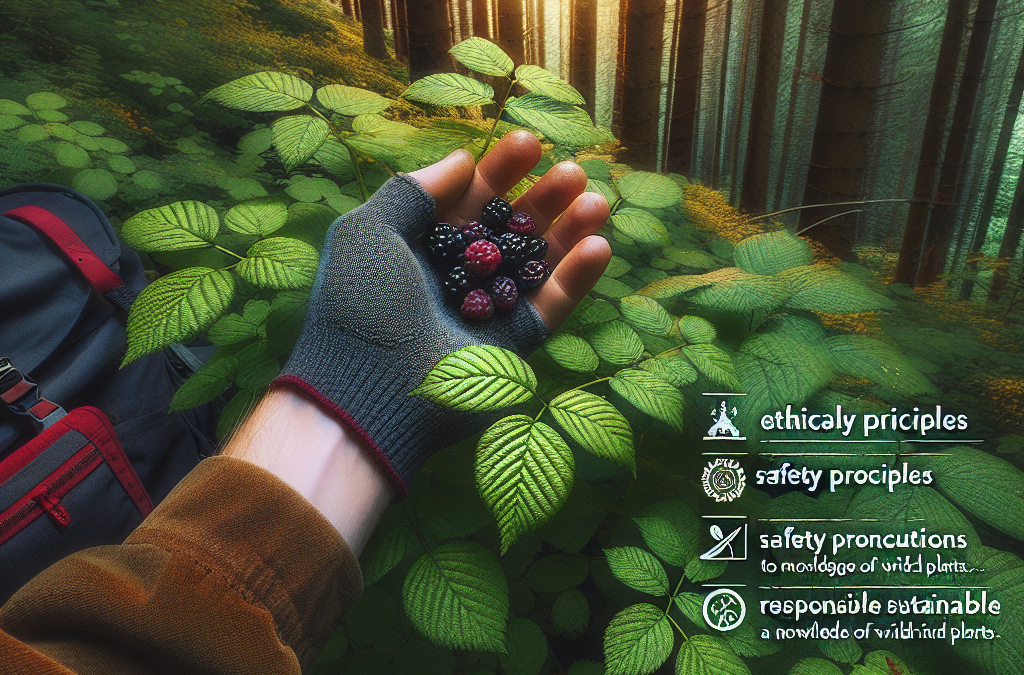You’re about to embark on an enlightening exploration of “Foraging During Hikes: Safe And Ethical Practices”. As an enthusiast of the great outdoors, there’s an undeniable joy in harvesting what nature freely gives. This rewarding and self-sustainable practice brings us closer to nature and connects us with our ancestors, but it isn’t without its risks and responsibilities. Therefore, this article will guide you through vital safety measures and ethical guidelines to ensure that your foraging adventures are both fulfilling and respectful to the environment.
Understanding Foraging
Foraging, simply put, is the act of hunting or gathering food from its natural environment. This can involve collecting wild mushrooms, picking berries, and digging for clams—anything that involves harvesting food directly from nature.
Definition of Foraging
Foraging is the act of searching for and collecting provisions from the wild. It comprises harvesting wild foods like plants, fruits, nuts, seeds, and mushrooms. It also includes gathering other useful items like materials for building or crafting, medicines, and spices.
History and Evolution of Foraging
Foraging is as ancient as humanity itself. Before the advent of agriculture, our ancestors depended entirely on hunting and gathering to survive. It wasn’t until around 10,000 years ago that humans started cultivating food and domesticating animals on a large scale. Despite the progression of our species, foraging still remains a fundamental skill for wilderness survival and has also evolved into a recreational activity for enthusiasts seeking a connection with nature and sourcing food in a sustainable way.
Benefits of Foraging
The benefits of foraging stretch far beyond just sourcing fresh food. It provides a perfect excuse to spend your time outdoors thus facilitating exercise, it encourages you to learn about your local ecology and can also provide mental health benefits due to its meditative qualities. Moreover, many wild foods are incredibly nutrient-dense and will add to a balanced diet.
Risks and Concerns with Foraging
Despite the benefits, foraging presents various risks. The most notable is the danger of consuming poisonous plants or fungi, which may look quite similar to safe-to-eat varieties. Also, over-harvesting can lead to damage in local plant communities and indirectly affect the wildlife that depends on them.
Fundamentals of Safe Foraging
Foraging requires a keen sense of knowledge about the natural ecosystem. To forage safely and sustainably, you must keep a few primary rules in mind.
Knowing the Edible and Non-Edible
Understanding which plants are edible and which are not is vital. It is best to familiarize yourself with a limited number of edible species that grow in abundance and are easy to identify.
Signs of Toxic Plants
Some plants in the wild can be harmful or even fatal if consumed. Familiarize yourself with the common signs of toxic plants such as having a milky sap, umbrella-shaped flowers, or a bitter taste.
Safe Foraging Techniques
Ensuring that you use appropriate tools and techniques whilst foraging can decrease potential harm to the environment. Avoid pulling up roots, as it can potentially kill the plant and disrupt the surrounding ecosystem; rather, get in the habit of clipping or gathering leaves, stems, and flowers.
First Aid for Accidental Poisonous Consumption
Knowledge of basic first aid is essential while foraging. In case of accidental poisonous plant or fungi consumption, being prepared can minimize harm. The essential steps should be to remove any remnants from your mouth, rinse your mouth and skin thoroughly, and seek medical assistance immediately.

Essentials for a Foraging Kit
Whatever your reasons for wanting to forage, it’s important to have the right gear. This can make the difference between a successful foray and a frustrating one.
Suitable Clothing and Footwear
Foraging involves coming into contact with a variety of plants and landscape features, it’s important to be well-dressed to protect yourself. Long-sleeved shirts and pants, hats for sun protection, durable gloves to protect your hands, and sturdy, waterproof footwear are all necessary.
Tools for Foraging
Items such as baskets for collecting food, a pair of sharp secateurs for cutting, a trowel for digging, and bags for temporarily storing your collected items are key to seamlessly gathering nature’s bounty.
Containers for Collection
Baskets, bags, and other containers are crucial for hauling your finds back home. Baskets are ideal for delicate items like mushrooms and leaves, while durable bags work best for heavier items like nuts and fruits.
Reference Materials for Identification
Having physical or digital identification guides on hand is key for accurately identifying plants and fungi. These can give you confidence in your finds and help avoid any potential mishaps.
Foraging Laws and Regulations
Knowing the law, and respecting it, is the basis of ethical foraging.
Understanding Foraging Rights
Foraging rights can vary greatly by country and region. Understanding these rights can help you to respect both the environment and the rights of property owners and other users of the land.
Common Legal Restrictions
Foraging may be restricted or prohibited in some areas due to various reasons such as protection of rare or endangered species, maintenance of recreational spaces, or to prevent damage to the environment.
Respecting No-Trespassing Areas
While foraging is generally allowed in public lands, crossing into private property without permission constitutes trespassing. Always respect private lands and adhere to all posted signs.
Permits and Licenses for Foraging
Depending on the area, permits might be required for certain types of foraging, especially if you intend to sell the materials you collect.

Ethical Foraging Practices
For many foragers, a strong sense of respect and responsibility for the land is key.
Keystone Species and their Importance
Keystone species play a significant role in the functioning and diversity of an ecosystem, often being a primary food source for other wildlife. Over-foraging can have a domino effect on these species and the greater environment.
Sustainable Harvesting Practices
Encourage the re-growth of plants by only harvesting what you need and never take more than a third of a plant. Always leave some for the wildlife and for future regeneration.
Respecting Wildlife Habitats
Wildlife habitats may also be accidentally disturbed or damaged during foraging activities. It’s important to be aware of the potential impact of your actions on these habitats and make every effort to minimize your effect.
Invasive Species and Their Impact
Removing invasive plants can help protect the local flora and fauna. However, foraging should be carried out in a manner that does not unintentionally spread seeds or plant material, thus contributing to their spread.
Foraging and Environmental Protection
Overcoming the challenges faced by the environment today requires the adoption of more sustainable practices in every aspect of our lives, and foraging is no exception.
Role of Foraging in Conservation
Selective and sustainable foraging can encourage biodiversity and assist in conservation efforts. Many invasive plant species, which often negatively affect local ecosystems, are edible and can be selectively targeted to help control their spread.
Impacts of Over-collection
Over-collection can have severe impacts on local ecosystems, leading to reduced plant populations, habitat destruction, and even extinction in extreme cases. Always remember to forage responsively.
Foraging as an Eco-friendly Activity
By sourcing your own food locally and seasonally, you can reduce your food’s carbon footprint and contribute to sustainable living practices. It’s one of the most directly eco-friendly ways you can dine.
Steps to Reduce Foraging Footprints
Walking on designated paths, avoiding trampling on plants, respecting habitats, and leaving no trash behind are simple ways you can reduce your impact on the environment when foraging.
Involving Kids in Foraging
By involving children in foraging, you can educate them about the environment, impart survival skills, and foster a long-lasting appreciation for nature.
Teaching Kids about Foraging
You can start by teaching them the basics of foraging such as identifying common edible plants, the importance of only taking what you need, and the risks of consuming unknown plants and mushrooms.
Foraging Safety Measures for Kids
Foraging with kids should be both fun and safe. Children should always be supervised, be dressed appropriately and should never be allowed to consume foraged foods without an adult’s guidance.
Kid-friendly Foraging Activities
Get creative with the species you find! This could involve using foraged flowers and leaves for craft activities, making jams and pies with foraged berries, or creating nature-inspired artwork.
Creating a Love for Nature through Foraging
Foraging gives kids a direct experience with nature—building a relationship that will instill reverence for the environment early on.
The Role of Foraging in Gastronomy
Foraging is more than just a fun hobby—it’s a tool for creative and sustainable cooking.
Using Foraged Ingredients
Foraged ingredients can elevate any dish with their unique flavors and textures. They can be used in various dishes like salads, soups, sauces, desserts, and more.
Experimental Foraging Recipes
Utilize foraged food in your cooking experiments. A handful of wild garlic leaves can add a punch to your salad, while wild berries can be turned into a tantalizing sauce.
Preserving and Storing Foraged Foods
Pickling, fermenting, drying, freezing, or making jam are all popular methods for preserving your foraged finds. This way, you can enjoy them long after the season has ended.
Health Benefits of Foraged Foods
Most foraged foods are nutrient-rich, offering various health benefits. Wild greens are often high in essential vitamins and minerals, while wild berries are packed with antioxidants.
Skills and Tips for Successful Foraging
With practice and experience, you’ll hone your foraging skills and develop an instinct for finding the best spots and the tastiest specimens.
Mastering the Seasons
The changing seasons bring different species. Understanding this cycle can help you know what to look out for throughout the year.
Mapping for Successful Foraging
Keeping a record of your foraging locations can help you remember successful spots and assist you in tracking the seasonal changes of the landscape.
Using Technology for Foraging
Smartphone apps can help identifyplants and share location pins. However, always cross-reference with reputable sources before consuming your finds.
Joining Foraging Communities
Join foraging groups or networks that offer community foraging events, and share experiences and knowledge.
Foraging in Different Types of Terrain
Different environments provide a diverse range of foraging opportunities.
Foraging in Forests
Forests can offer a wealth of edible resources from mushrooms to nuts, berries, and wild herbs.
Foraging in Coastal Areas
Coastal areas provide unique foraging opportunities with seaweed, shellfish, and a variety of edible plants that thrive in sandy soils.
Foraging in Meadows and Fields
Meadows and open fields are likely to yield wild greens, herbs, and an array of flowers.
Urban Foraging
Urban foraging, also called “urban harvesting,” involves searching for edible plants in urban environments such as parks, urban green spaces, or even your backyard.
Foraging is an amazing skill that rewards patience and respect for nature. With careful practice and consideration, you can enjoy the bounty of the natural world, contribute to its preservation, and strengthen your bond with the earth. Happy foraging!

